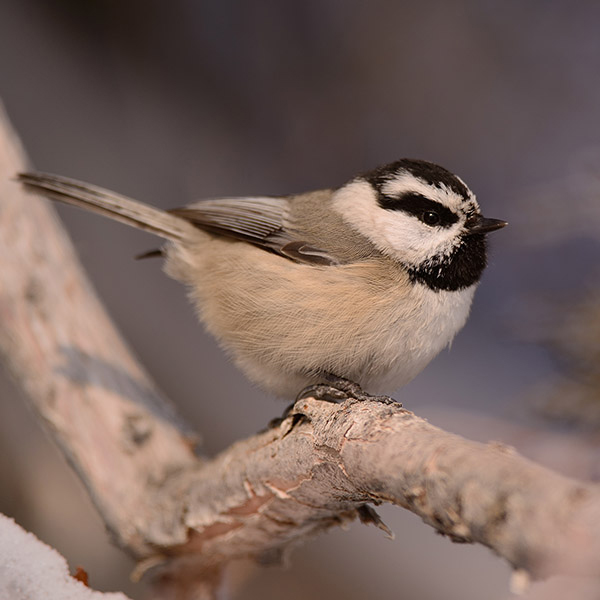|
Utah Bird Profile |
|||||
|
Name Roots: (Poecile [?] - for William Gambel) |
|||||
| In Utah: |
 by John Crawley |
||||
| Nesting, feeding, characteristic behaviors: |
Nests in a conifer or in a snag at a height of 4-8 (0.5-80) feet, in a
cavity nest. This species is not a cowbird host. During the breeding season,
this species is an insectivore: lower-canopy
gleaner. During the non-breeding seasons this species is an omnivore: lower-canopy forager.
|
||||
| Habitat: | Spruce-fir community Breeds in Utah in mixed conifer and pinyon-juniper habitats. |
||||
| How to find: |
Not as apt to be found in lower elevations as its cousin [the Black-capped
Chickadee]. If you look at the range maps and compare the two chickadee
species found in Utah it would appear that this species has a wider
distribution. However, it is mainly found in montane forests, so its
distribution is a little less extensive than the Black-capped just because
there is less montane forest than the other types I have listed. Any trip to
the mountains where there is a spruce-fir community will yield this species.
In Utah County that would be the following areas: Mount Timpanogos (alpine
loop), Squaw Peak Trail, Mount Nebo Scenic Loop and the upper reaches of
Spanish Fork Canyon. In Salt Lake and Davis Counties it would be any canyon
to the east of the valleys where conifers can be found such as the
Cottonwood Canyons and Farmington Canyon. ~Merrill Webb |
||||
|
|
USGS Profile
(Geological Survey) |
US
Winter Range Map |
US
Summer Range Map | |
|||||
|
|||||
|
Abbreviations | References | Legend
|
|||||